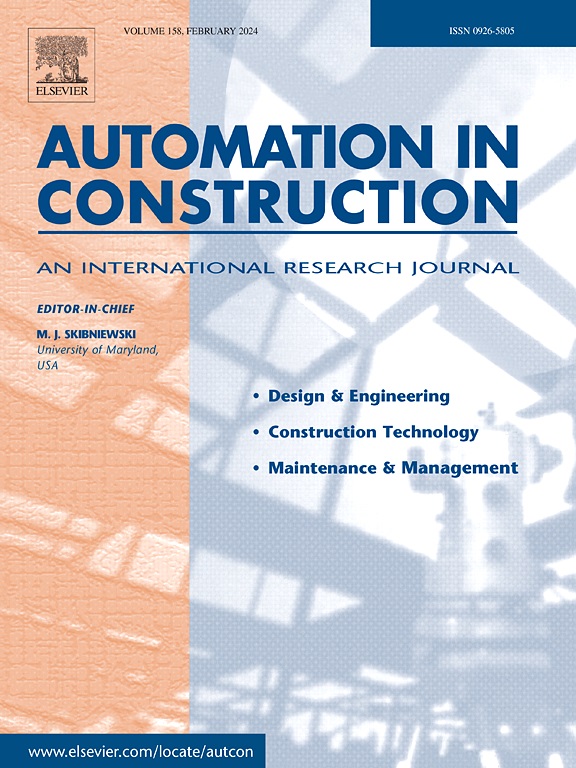道路施工区安全事故报警系统性能评估
IF 9.6
1区 工程技术
Q1 CONSTRUCTION & BUILDING TECHNOLOGY
引用次数: 0
摘要
道路施工区对过往车辆和在施工区内行驶的建筑工人都构成了极大的安全风险。近年来,人们致力于对施工区安全进行大量研究,特别是利用新兴技术。本文旨在回顾有关旨在减轻撞击危险的安全技术性能评估的文献。该综述确定了 57 篇以技术评估为重点的相关出版物,并使用四组件网络-物理系统 (CPS) 层次结构和适应性保护层分析 (ALOPA) 框架对这些出版物进行了严格审查。基于 CPS 层次结构的审查揭示了所评估的重点组件、这些组件之间的关系、所采用的方法以及关键性能结果。通过 ALOPA 框架审查了评估方法的范围和完整性。这项研究的结果突出了探索人为因素对无风险虚拟环境中事故避免结果的影响的新趋势,并根据 ALOPA 框架提出了若干前瞻性考虑因素,这些因素可以指导未来的研究,实现基于性能的评估和设计优化。本文章由计算机程序翻译,如有差异,请以英文原文为准。
Performance evaluation of struck-by-accident alert systems for road work zone safety
Road work zones pose significant safety risks to both vehicles passing by and the construction workers moving within the work zones. Over recent years, significant research efforts have been dedicated to work zone safety, particularly by leveraging emerging technologies. This paper aims to review the literature on performance evaluation of safety technologies designed to mitigate struck-by hazards. This review identified 57 relevant publications focusing on technology evaluation, which were critically reviewed using the Four-component Cyber-Physical System (CPS) hierarchy and the Adapted Layer of Protection Analysis (ALOPA) framework. The CPS hierarchy-based review unveiled the focused components under evaluation, the relationship among these components, the methodologies employed, and the key performance results. The extent and completeness of the evaluation methods were examined through the ALOPA framework. The findings of this research highlight emerging trends that explore the impact of human factors on accident avoidance outcomes in risk-free virtual environments and suggest several prospective considerations as per ALOPA that can guide future research towards performance-based evaluations and design optimisations.
求助全文
通过发布文献求助,成功后即可免费获取论文全文。
去求助
来源期刊

Automation in Construction
工程技术-工程:土木
CiteScore
19.20
自引率
16.50%
发文量
563
审稿时长
8.5 months
期刊介绍:
Automation in Construction is an international journal that focuses on publishing original research papers related to the use of Information Technologies in various aspects of the construction industry. The journal covers topics such as design, engineering, construction technologies, and the maintenance and management of constructed facilities.
The scope of Automation in Construction is extensive and covers all stages of the construction life cycle. This includes initial planning and design, construction of the facility, operation and maintenance, as well as the eventual dismantling and recycling of buildings and engineering structures.
 求助内容:
求助内容: 应助结果提醒方式:
应助结果提醒方式:


